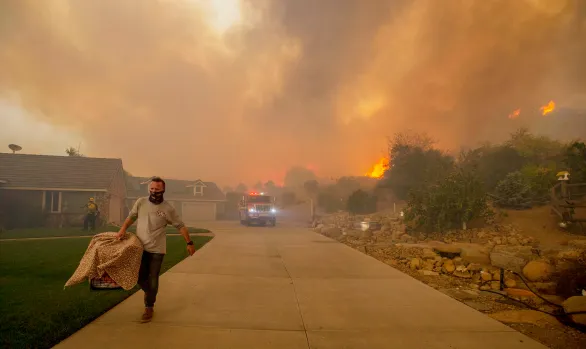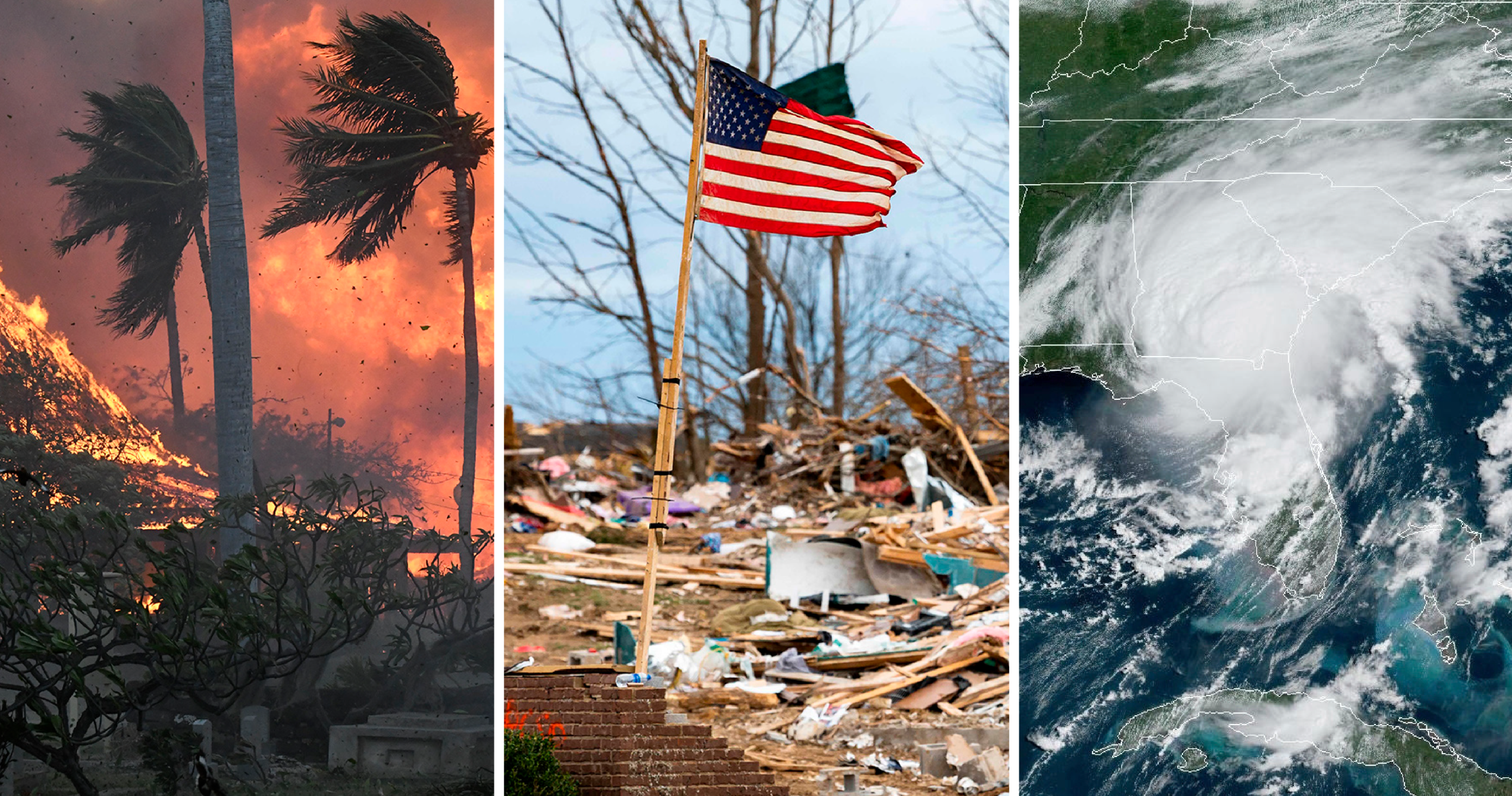California’s fire season has become an annual crisis, blanketing the sky with thick, hazardous smoke and posing severe health risks to millions. Each year, wildfires burn across the state, turning forests and grasslands into ash and sending plumes of toxic smoke into the atmosphere. The 2024 California Wildfires: Causes, Damage, and Recovery Efforts – GIS Valley The impact on air quality is devastating, affecting not just California but neighboring states as well.
But why is wildfire smoke so dangerous? How does it affect human health, and what can be done to mitigate its impact? In this article, we delve into the science behind wildfire smoke, its health hazards, and ways to protect yourself during California’s fire season.
The Science Behind Wildfire Smoke
Wildfire smoke is more than just a nuisance; it is a complex mixture of gases and fine particles that can travel hundreds of miles from the source. Identification and Characterization of Forest Fire Risk Zones Leveraging Machine Learning Methods When forests, vegetation, and man-made structures burn, they release pollutants, including:
- Particulate Matter (PM2.5 & PM10) \U0001F525 – Tiny particles that can penetrate deep into the lungs and bloodstream.
- Carbon Monoxide (CO) \U0001F30D – A colorless, odorless gas that reduces oxygen levels in the blood.
- Volatile Organic Compounds (VOCs) \U0001F4A8 – Harmful chemicals that can cause respiratory issues and long-term health problems.
- Formaldehyde and Benzene \U0001F6A8 – Known carcinogens released from burning materials.
Because of its small particle size, PM2.5 is the most concerning pollutant. These microscopic particles can travel deep into the respiratory system, leading to severe health effects.
How Wildfire Smoke Affects Air Quality
When large wildfires burn, they release millions of tons of smoke into the air, causing air quality to plummet. The Air Quality Index (AQI) is used to measure pollution levels, with higher numbers indicating greater health risks. During peak wildfire seasons, AQI levels in California often reach “hazardous” levels (above 300), meaning the air is unsafe for everyone.
Impact on Cities and Rural Areas
- Urban Areas \U0001F3D9 – Cities like Los Angeles, San Francisco, and Sacramento experience worsening air quality due to trapped wildfire smoke in valley regions.
- Rural Communities \U0001F333 – Areas close to wildfire zones face direct exposure, increasing risks of smoke inhalation, evacuations, and property loss.
- Neighboring States \U0001F30F – Smoke from California wildfires often drifts into Oregon, Nevada, and beyond, affecting air quality across the western U.S.
Health Hazards of Wildfire Smoke

Exposure to wildfire smoke can cause both short-term and long-term health effects, depending on the duration and intensity of exposure.
Short-Term Health Effects
\U0001F912 Respiratory Issues – Smoke inhalation can cause coughing, wheezing, shortness of breath, and throat irritation.
\U0001F637 Eye and Skin Irritation – Fine particles can lead to burning eyes, runny nose, and skin rashes.
\U0001FA78 Headaches and Dizziness – Carbon monoxide exposure can reduce oxygen levels, leading to fatigue and dizziness.
Long-Term Health Risks
\U0001F9E0 Lung Damage – Prolonged exposure to PM2.5 can lead to chronic lung conditions like COPD and asthma.
\U0001F499 Heart Disease – Wildfire smoke increases the risk of heart attacks and strokes, particularly in those with pre-existing conditions.
\U0001F3E5 Increased Mortality – Studies link severe air pollution exposure to premature deaths, especially among the elderly and vulnerable populations.
Who Is Most at Risk?
While wildfire smoke is harmful to everyone, certain groups face higher health risks:
- Children \U0001F476 – Developing lungs make them more susceptible to respiratory issues.
- Elderly Individuals \U0001F475 – Pre-existing health conditions increase vulnerability.
- Pregnant Women \U0001F930 – Exposure can lead to complications like low birth weight and preterm birth.
- People with Asthma and Lung Diseases \U0001F44C – Higher sensitivity to air pollutants can cause severe attacks.
- Outdoor Workers \U0001F4AA – Firefighters, construction workers, and agricultural workers face prolonged exposure.
How to Protect Yourself from Wildfire Smoke
Taking the right precautions can help minimize exposure and reduce health risks during wildfire season.
1. Monitor Air Quality
\U0001F4F1 Use air quality apps (e.g., AirNow, PurpleAir) to check AQI levels in your area before going outdoors.
2. Stay Indoors During High Smoke Periods
\U0001F3E0 Close windows and doors, and use HEPA air filters to keep indoor air clean.
3. Wear a Proper Mask
\U0001F637 N95 masks filter out harmful particles, while cloth masks do not provide sufficient protection.
4. Create a “Clean Air” Room
\U0001F33F Use air purifiers and keep doors closed to maintain a low-smoke environment inside your home.
5. Stay Hydrated and Limit Outdoor Activities
\U0001F964 Drink plenty of fluids to keep airways moist and avoid strenuous exercise outdoors.
6. Protect Vulnerable Individuals
\U0001F476 Ensure children, elderly, and those with health conditions have access to clean indoor air.
California’s Efforts to Tackle Wildfire Smoke
The state of California has implemented various strategies to combat wildfire-related air pollution:
- Controlled Burns \U0001F3F7 – To reduce fuel buildup and prevent large-scale wildfires.
- Stronger Building Codes \U0001F3E2 – Fire-resistant materials and better urban planning.
- Emergency Response Plans \U0001F198 – Evacuation alerts, air quality warnings, and public health advisories.
- Investment in Air Quality Monitoring \U0001F50E – Expansion of AQI tracking and public awareness campaigns.
Final Thoughts: Breathing Safer During Fire Season
California’s wildfires are not just a threat to forests and homes, but to the air we breathe. The increasing intensity of fire seasons makes it crucial to understand the health risks of wildfire smoke and take proactive steps to protect ourselves. By monitoring air quality, wearing masks, and creating clean indoor spaces, individuals can minimize exposure and safeguard their health.
With climate change fueling more frequent and intense wildfires, preparing for worsening air quality will be an ongoing challenge. Staying informed and adopting protective measures can make all the difference in ensuring a healthier fire season for everyone.
Stay safe. Stay informed. Protect your lungs. \U0001F4A8


